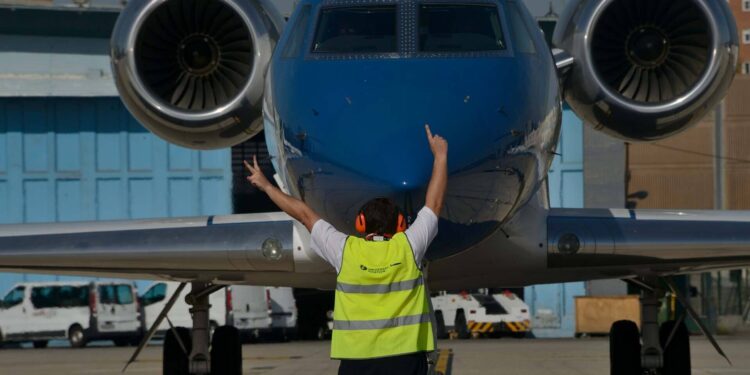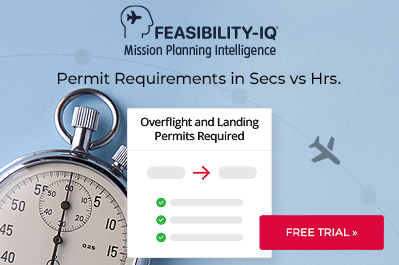Technical Stops for Business Aviation: Part 2 – Additional Considerations

This business aviation blog post continues from our article last week, titled “Technical Stops for Business Aviation: Part 1 – Basic Considerations.”
It’s always important to ensure you meet all requirements for a particular tech stop. Work with your trip support provider and local ground handler to be aware of any curfews, operating restrictions and documentation requirements. Some airports, for example, are closed on weekends. A last minute schedule change could, potentially, cause you to be held on the ground over a weekend.
The following is an overview of what you need to know:
1. Visa requirements
Crew and passenger visas are not usually needed for international tech stops. If, however, you decide to remain overnight for crew rest or passenger requirements, visa rules will apply – depending upon destination and your nationality. It’s important to be aware of contingency options in such cases. Some locations, such as Shanghai (ZSSS) and Beijing (ZBAA), will grant certain international passengers visas-free stay up to 72 hours – if your next flight leg is to a third country. For more information on this, it’s best to speak to your trip support provider or ground handler. But, there have been cases – in various places around the world — when overnighting passengers and crew have had to remain on their aircraft if they did not possess required visas. It’s best practice to secure visas for countries that require visas and that you tech stop at on a regular basis.
2. Credit and payment for services
It’s important to address credit considerations in advance of using a tech stop. Will your fuel or credit cards be accepted for payment, should you carry a fuel release, and will cash payments be necessary? Cash payment requirements for fuel and handling are very rare these days. In nearly all cases, your trip support provider or local ground handler will arrange credit and eliminate the need for cash.
3. Onboard pets
Caution is advised when traveling with pets. If Fido or Fifi exits the aircraft for nature’s calling during an international tech stop, you may face quarantine requirements or, in the worst case, lose your animal. Always arrange prior permission with tech stop locations if you have a pet onboard who may desire to deplane. Some locations grant special permission for pets to exit briefly for bio breaks, while other locations may permit the pet to deplane to make use of designated “pet areas.”
4. Weapons onboard
It’s usually not problematic to have guns or weapons onboard if you’re on an international tech stop and local authorities have been advised, in advance, of the onboard weapons. Sometimes, local authorities may request to see a manifest, itemizing guns/weapons, but they do not usually physically check weapons.
5. Cost considerations
Costs for handling, fuel, and fuel taxes vary widely worldwide, and some tech stops are much more expensive propositions than others. Tech stopping at Shannon (EINN) costs significantly less than at Frankfurt (EDDF). Likewise, a tech stop at Petropavlovsk (UHPP) will be a fraction of the cost of tech stopping at Narita (RJAA). In cases where tech stop cost is a significant determining factor for operators, your trip support provider can help with analysis of fuel burn, flight times, and economic benefit in diverting from a great circle routing.
6. Geopolitical risks
Geopolitical risks at tech stop locations are always an important element in pre-trip planning. These days, most operators avoid tech stops in Ukraine, Libya and Egypt, due to the political situation each of these countries is experiencing. Likewise, Somalia and certain parts of central and western Africa are also being bypassed as tech stop considerations. Always consider aircraft insurance coverage and flight department operational specifications when evaluating foreign tech stop possibilities. Meanwhile, there are many great tech stops available globally – from EINN to Dakar (GOOY) and Casablanca (GMMN). Even remote locations, such as Ulaanbaatar (ZMUB), make effective tech stops full-service 24 hour support.
7. Penalties for mistakes
Keep in mind that landing for tech stop purposes without required permits or airport slots when needed is a violation, and you’ll be in trouble. Landing without a required slot, for example, can result in detention of your aircraft and the principal passenger potentially missing meetings at the next planned stop. Be mindful of rules, procedures, and requirements for all planned tech stops. If you make an international tech stop at San Juan (TJSJ), for example, be aware that you’re stopping in U.S. territory. All foreign nationals on board (passengers and crew) will need to have appropriate visas and documentation to clear customs, immigration, and quarantine at this location.
Conclusion
Fuel availability is always a top consideration when evaluating tech stops. It’s always best to confirm fuel availability and credit in advance of day of operation. At some locations it’s recommended that fuel uplift quantity always be specified and confirmed prior to arrival. Also, it’s important to determine the regulations for each tech stop and what requirements must be met such as airport slots prior to making arrangements for a stop at the particular location.
Questions?
If you have any questions about this article or would like assistance determining the tech stops for your next trip, contact me at katherineperry@univ-wea.com.




